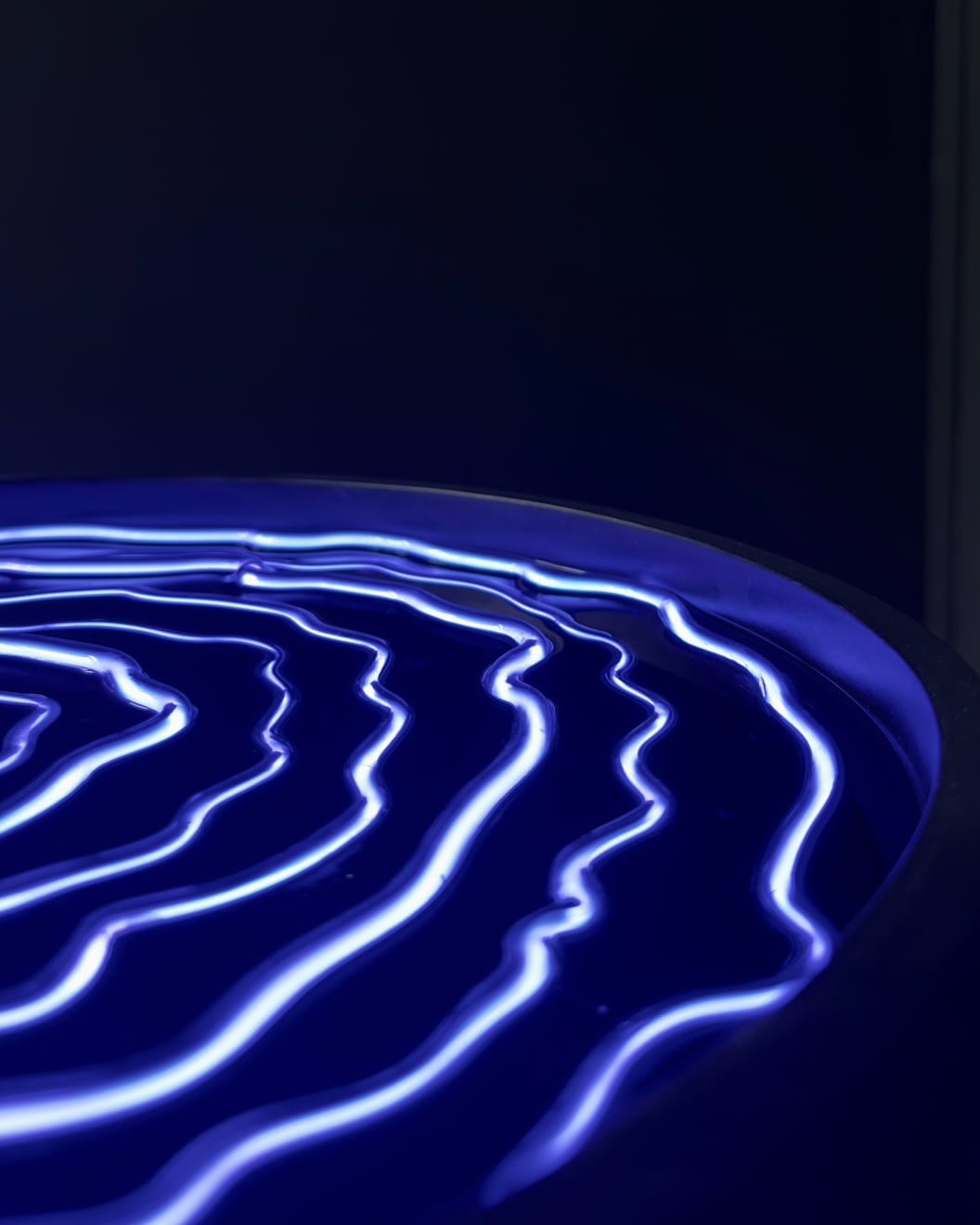Annesta Le
Labyrinth, 2023
Neon (coated Glass, Argon, wire), mineral oil, wood
29 1/2 x 16 3/4 x 16 3/4 in
74.9 x 42.5 x 42.5 cm
74.9 x 42.5 x 42.5 cm
AL0050
Copyright The Artist
Plus d'images
In Labyrinth(2023), Le explores a universal symbol through sculptural form. Using three elements–light, water and a labyrinth–the work is a metaphor of the path we take in life in search...
In Labyrinth(2023), Le explores a universal symbol through sculptural form. Using three elements–light, water and a labyrinth–the work is a metaphor of the path we take in life in search of self-discovery. Light embodies the spirit, creative force and cosmic energy. Water is connected to emotions and the subconscious mind. Fluid, adaptable and capable of flowing through obstacles, water is malleable and, thus, a symbol of flexibility, resilience and the ability to navigate life's challenges with ease. The labyrinth's intricate pathways reflect the meandering nature of water as it navigates its course, creating a symbolic connection between the two. Both water and a labyrinth evoke a sense of flow and movement. A Cretan labyrinth is a type of maze that originated on Greece’s island of Crete. In Greek mythology, it was said to be built by the craftsman Daedalus for King Minos of Crete to contain the monstrous Minotaur. The ancient Labyrinth motif was an elaborate, confusing structure designed to be difficult to navigate with many twists, turns and dead ends. In modern usage, a Cretan labyrinth is a maze-like pattern that is often used as a symbol of the winding, complex path that one must follow in order to reach the center and achieve enlightenment or understanding. Water's reflective surface can mirror its surroundings, offering a metaphorical space for contemplation and self-reflection. Water also represents boundlessness, as it has no fixed shape or defined borders. Similarly, a labyrinth can be seen as a metaphorical journey without clear boundaries, encouraging exploration and discovery. The combination of water and a labyrinth evokes a sense of limitless possibilities, inviting individuals to explore the depths of their emotions, thoughts and experiences.
41
sur
41









